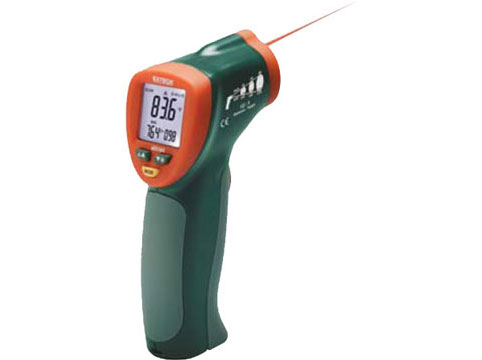Infrared thermometers, also known as non-contact thermometers, are devices that measure temperature without direct contact with the object being examined. They work on the principle of detecting and converting infrared radiation emitted by the object into temperature readings. The sensor in the thermometer detects the infrared radiation and translates it into an electronic signal, which is then displayed as a temperature reading on the device.
How Do Infrared Thermometers Work?
Infrared thermometers use a lens to focus the infrared radiation emitted by the object onto a detector, often made of a thermopile or a bolometer. The detector converts the focused infrared energy into an electrical signal, which is further processed to determine the temperature. The emissivity of the object, which refers to its ability to emit infrared energy, plays a crucial role in the accuracy of the readings.
Advantages of Infrared Thermometers
- Non-Contact Measurement: One of the primary advantages of infrared Thermometers is that they can measure temperature without making physical contact with the object. This feature is particularly useful when dealing with delicate or hazardous substances.
- Speed and Efficiency: It provide instantaneous temperature readings, making them ideal for applications where time is of the essence, such as in medical settings or quality control processes.
- Wide Temperature Range: These thermometers can measure a broad range of temperatures, from extremely low to very high, depending on the specific model.
- Portability and Ease of Use: They are generally compact and handheld, allowing for easy portability and simple operation by anyone.

Applications of Infrared Thermometers
- Medical Settings: Used in medical environments for measuring body temperature quickly and accurately. They have played a crucial role in screening individuals during pandemics and outbreaks.
- Food Safety: In the food industry, they used to ensure that food products are at the correct temperatures to prevent spoilage and foodborne illnesses.
- HVAC and Energy Auditing: Infrared thermometers aid in identifying heat loss, air leakage, and insulation issues in buildings, making them invaluable tools for energy auditors and HVAC technicians.
- Automotive Industry: Used to diagnose automotive problems by measuring temperature variations in engines, brakes, and cooling systems.
- Laboratory: Laboratory thermometers Used in various applications in research laboratories
Best Practices for Using Infrared Thermometers
- Ensure Proper Emissivity Setting: The accuracy depends on setting the correct emissivity value, so it is essential to calibrate the device for different surfaces.
- Consider Distance-to-Spot Ratio: Different infrared thermometers have varying distance-to-spot ratios, indicating the diameter of the area the device measures. Understanding this ratio is crucial to getting accurate readings.
- Account for Ambient Temperature: Extreme ambient temperatures can affect the accuracy of infrared thermometers. Users should be mindful of this and consider environmental conditions when measuring.